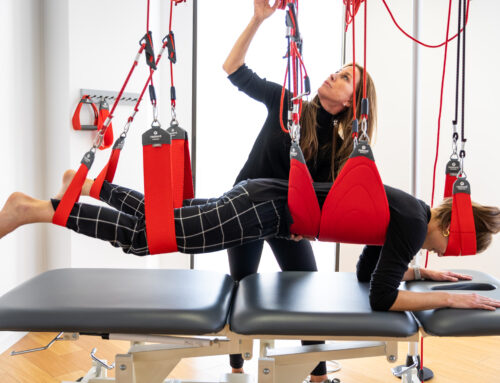This study aimed to identify the electromyographic (EMG) effects in selected trunk muscles after incorporating hip movement into bridging exercise.
Twenty-six healthy adults (13 men and 13 women) volunteered for this experiment. EMG data (% maximum voluntary isometric contraction) were recorded from the rectus abdominis (RA), obliquus internus (OI), erector spinae (ES), and multifidus (MF) muscles of the dominant side while the subjects performed 3 types of bridging exercise, including bridging alone (Bridging 1), bridging with unilateral hip movements (Bridging 2), and bridging with bilateral hip movements (Bridging 3) in a slingsuspension system.
The RA and OI showed greater EMG activity during Bridging 2 and 3 compared to Bridging 1, with the greatest OI activity during Bridging 3 (p < 0.05), and the activity of the MF appeared to be greater during Bridging 3 than during Bridging 1 and 2 (p < 0.05). Furthermore, the OI/RA and MF/ES ratios were significantly higher for Bridging 2 (OI/RA ¼ 1.89 1.41; MF/ES ¼ 1.03 0.19) and Bridging 3 (OI/RA ¼ 2.34 1.86; MF/ES ¼ 1.03 0.15) than Bridging 1 (IO/RA ¼ 1.35 0.92; MF/ES ¼ 0.98 0.16).
The OI/RA ratio was significantly higher for Bridging 3 than for Bridging 2. Based on these results, adding hip abduction and adduction, particularly bilateral movements, could be a useful method to enhance OI and MF EMG activity and their activities relative to global muscles during bridging exercise.
Keywords: Bridging exercise, Electromyography, Hip movement, Trunk muscles





